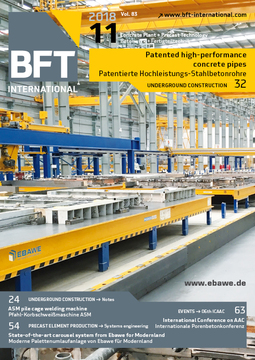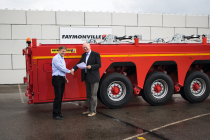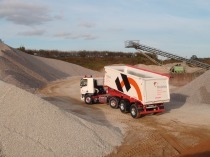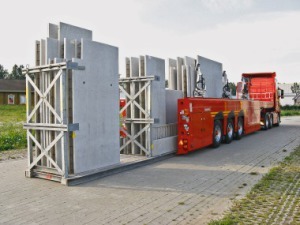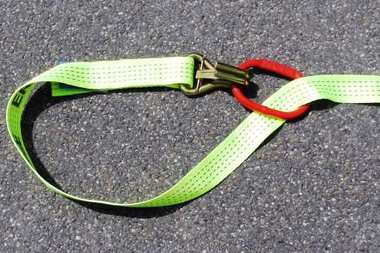Securing precast elements on vehicles
As a transit country, Germany has the highest traffic density in Europe. Routine police checks of cargo secured on trucks frequently raise the issue of whether such cargo has been secured and fastened properly in the case at hand. There is rather much room for interpretation with respect to concrete products and precast elements. This situation is aggravated by the fact that German police forces usually act at the level of the respective federal state. This is why spot checks in North Rhine Westphalia, for instance, may still consider the way the load is secured barely acceptable, whereas the Lower Saxony state police may well arrive at entirely different conclusions. The new VDI 2700 Part 10.3 guideline is to create uniform rules on which such assessments should be based.
Generally speaking, cargo must be secured so as to prevent it from sliding, tipping, rolling, falling off the vehicle, or causing the vehicle to roll over. VDI 2700 Part 10.3 provides a large number of appropriate methods for loading and securing packaged concrete products on various types of vehicles.
Protecting road users
The guideline addresses consignors, carriers, shippers, drivers, vehicle owners, and those responsible for securing loads and ensuring their safe transport under applicable laws, regulations, contracts, or other rules or standards.
The VDI 2700 Part 10.3 guideline on “Securing loads on road vehicles; securing of precast concrete elements; packaged concrete products” was issued by the VDI-Gesellschaft Produktion und Logistik (VDI-GPL; VDI Society for Production and Logistics). From August 2018, this guideline will be available from Beuth Verlag (+49 30 2601-2260) at a price of EUR 86.20; it supersedes the February 2017 draft. VDI members will enjoy a 10 % discount on all VDI guidelines. Online orders can be placed at //www.vdi.de/2700-10.3" target="_blank" >www.vdi.de/2700-10.3:www.vdi.de/2700-10.3 or //www.beuth.de" target="_blank" >www.beuth.de:www.beuth.de. VDI guidelines can also be viewed free of charge at many publicly accessible display points.

